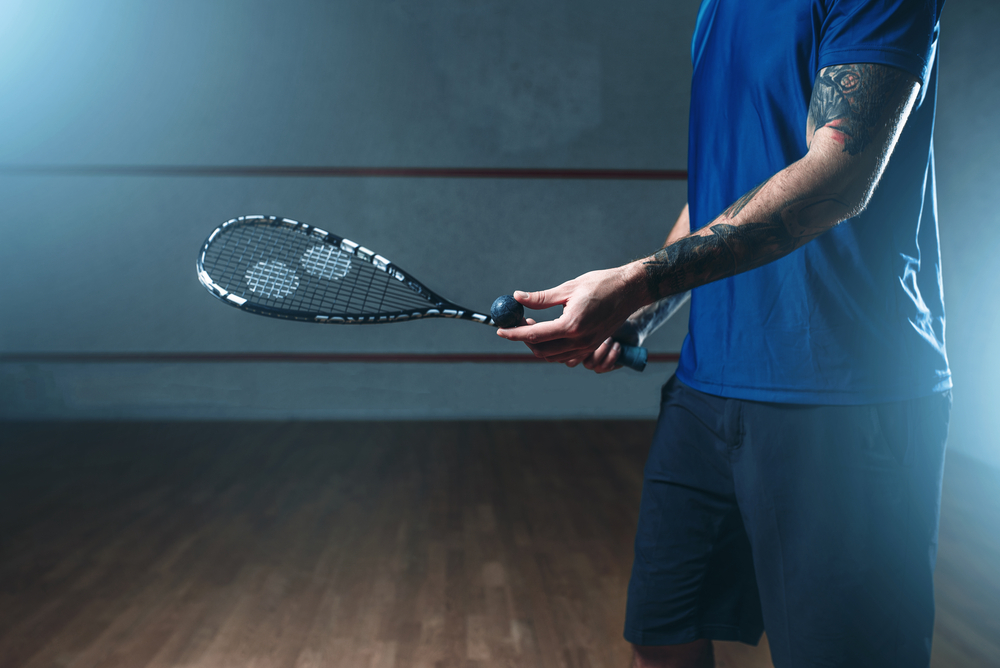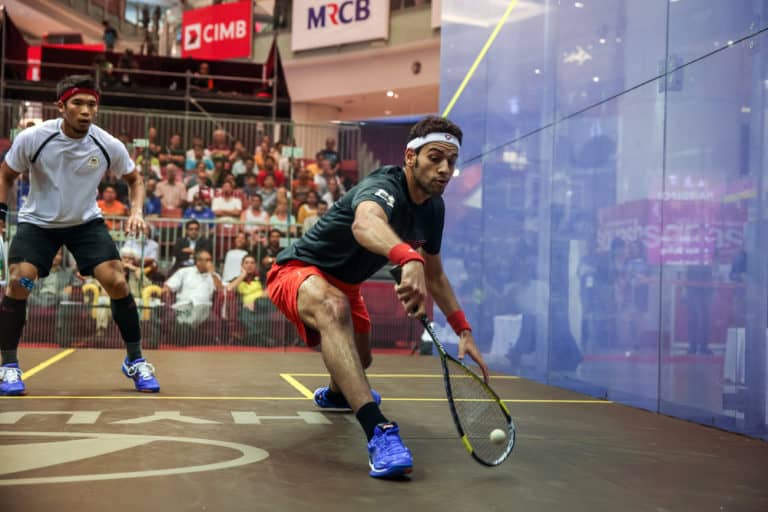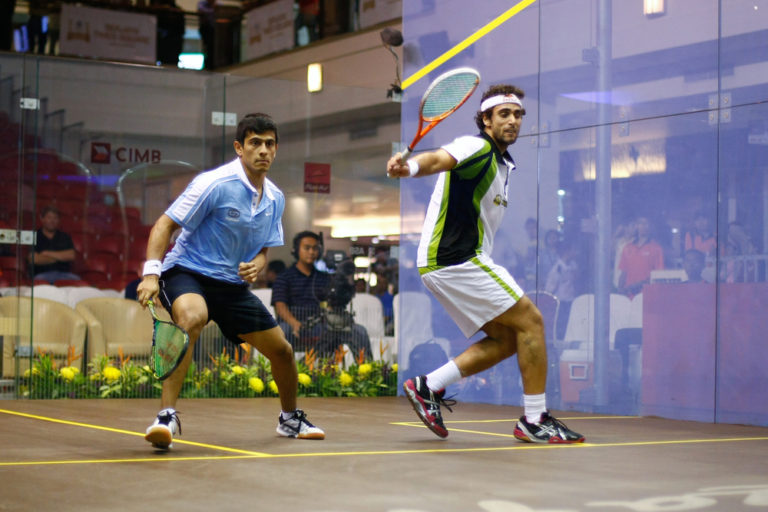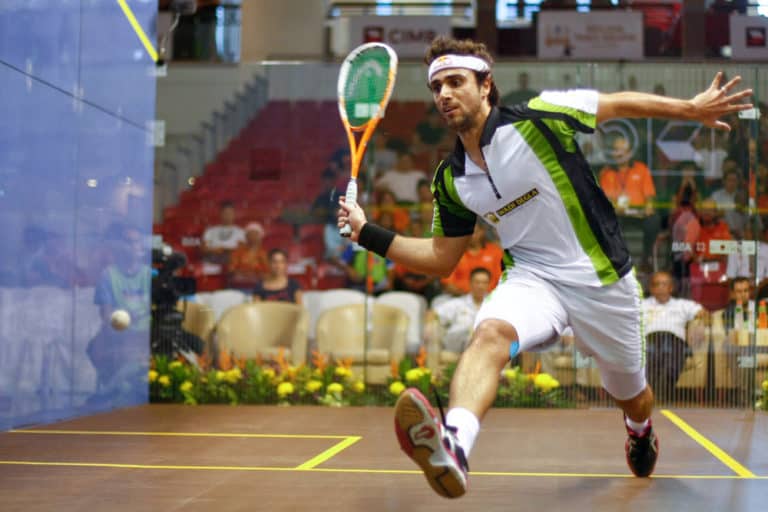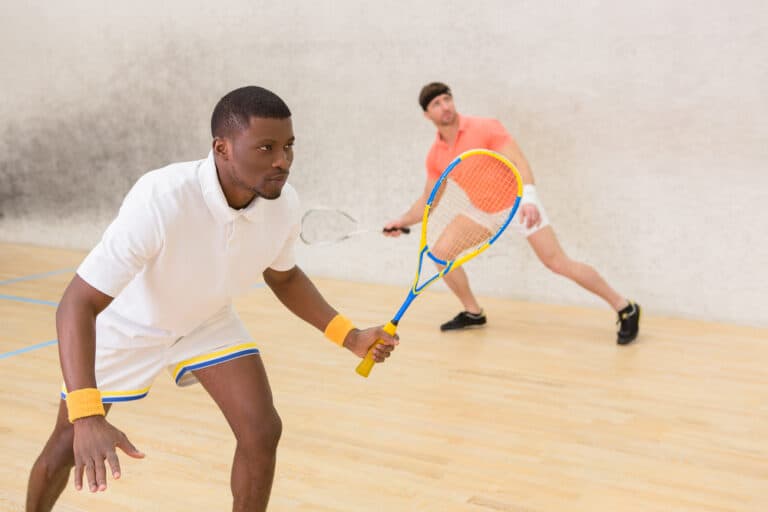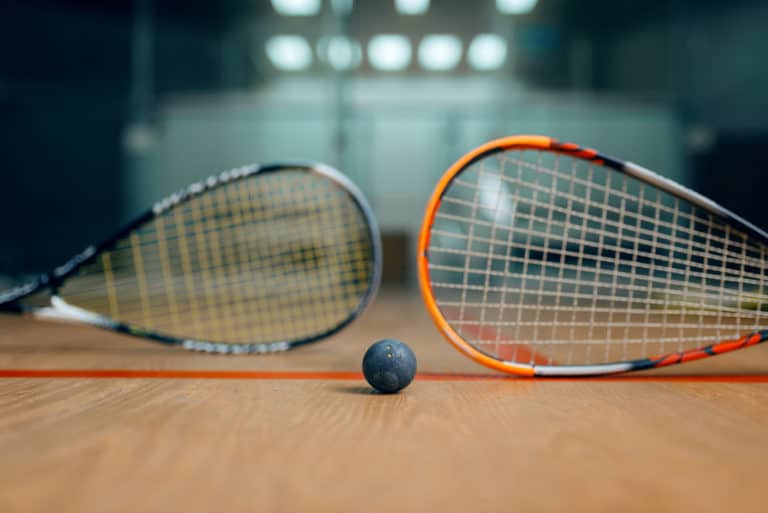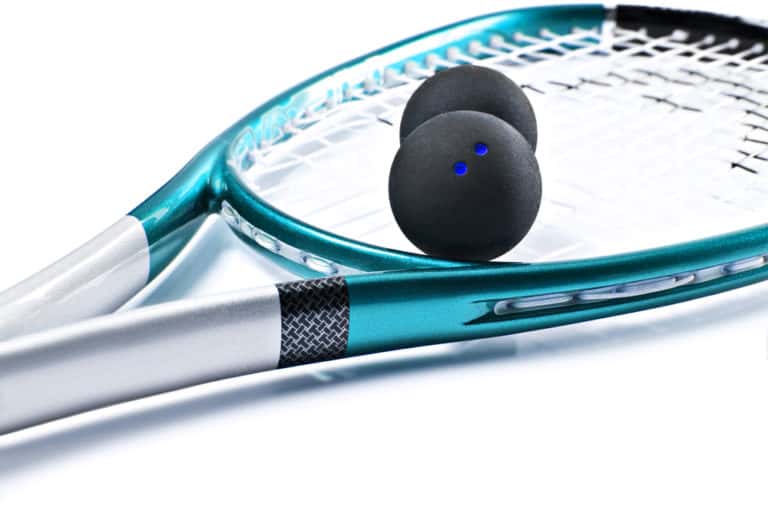What Are The Serve Variations In Squash?
The serve is one of the very few things you can control in a game of squash, along with how well you balance your movements. You can improve your squash game by practicing serve variations and striving to know where the ball will hit each time, thereby allowing you to control the game as much as possible. So what are the different serve variations in squash?
You should have five primary serve variations in your squash arsenal, each with its own minor variations. You can change your serve to include changes to pace and velocity, the angle, and the depth of your serve. Changing the variations of your serve will help you to control the court.
Serves are not the most effortless skill to master, but knowing that there are a few variations to the main serve helps. First, work with what you know and build up your confidence with each serve. Then you can practice mastering the many serve variations. Here are the serve variations in squash and how you can master them.
The Main Serve Variations In Squash
The essential rule when it comes to serves is knowing how to accurately play a serve to control the game further and use it to your advantage. You will reap immense benefits if you practice these serve variations and learn to play them well.
The advantage of a good serve is getting an edge over your opponent with just this one shot. It can make for some of the most intense games of squash you have ever played and so much more if your opponent has the same experience level as you. This one tactic can let you place tremendous pressure on your opponent.
The unfortunate fact of the matter is that if you start the game with a lousy serve, you will lose control of the game altogether and place yourself at a disadvantage. If your opponent knows their game, they will also know how to use that one simple mistake to their advantage.
So what exactly are these serve variations and techniques, and how can you use them to your advantage? The five main serve variations are:
- Lob Serve
- High Lob Serve
- Smash Serve
- Backhand Serve
- Body Serve
If you frequently change the velocity and height of your serve, the game will work out so much better for you, especially if you know your opponent’s weaknesses and how they will return the serve. For example, if they are bad at playing the ball from the side walls, this can often result in a return that is too hard or soft if they are still unsure or lack confidence.
Some players can be completely thrown off their game when you change your serve variation and the pace of your serve. This can include an unexpected slow serve.
You can start off with a hard lob serve that will hit the back of the side wall. Later, when you and your opponent are full of adrenaline and the rush of the game, you can throw your opponent off with a slow serve that will hit the side wall. This will make it so much harder for them to resist with a hard, powerful drive which can result in a mistake for your opponent and a point in your favor.
Where Should You Serve
First things first. Before we delve deeper into the serve variations, there is another matter that we must also understand. It is essential to know where to hit the serve. Once we know this, we can then look deeper into the variations of the serve and their techniques.
Before you start a serve, look ahead to determine where you want to be at the point of your opponent’s return of serve. This should be the question you ask yourself each time before you serve. Making this a priority and a ritual before starting a game will allow you always to be ready to receive the ball after your opponent’s return.
Secondly, determine where your opponent prefers to stand, especially if they’re a beginner. This can give you the advantage over the rally. If your opponent is too far forward, then lob the ball in deep. If they are standing too far from the wall, you can serve further into the front wall from where they are standing. This will give them a disadvantage and will probably be a fatal error on their return.
Just through this one tactic, and by moving into position before the ball has reached your opponent’s racket, they will already have made the connection that you are ready and have an advantage. This will make your opponent unsure of how to return the serve or change their tactics to a more defensive return shot.
When you achieve this, you have given yourself the advantage of establishing control of the rally, either giving you the time to move into your place and controlling the game at the “T,” or by pressuring your opponent to hit an attacking shot, which could be a fatal error on their side.
If you want to stay in control of the “T,” you should generally stay away from serving the ball too far from the side wall since this gives your opponent more options for returning the serve, resulting in you not taking your stance at the “T.”
Depending on who you’re playing against and how skilled they are, see if you can vary your serve by moving it to the side wall before it can be cut off from hitting the side wall. Many players are not really comfortable playing the ball from the side, so this can place you at an advantage.
The Lob Serve Variation In Squash
A lob serve is the go-to serve for most players. It is a comfortable serve, and it’s also the one that will not exhaust a player too much in the long run. There are two main variations to a lob serve, namely, the standard lob serve, and the high lob serve.
The Standard Lob Serve
A standard lob serve should be angled so that it will hit the side wall before your opponent can return the serve. You should vary this serve so that it loses its strength when it hits the back wall. If you can master playing this variation, you will effectively throw your opponent’s game off.
The best spot to stand in for a lob serve is well forward. Stand with your rear foot in the box and close to the center of the court. This position already places you close to the “T,” so it is easy for you to move in and volley the ball.
Where To Aim The Lob Serve
A lob serve is aimed at the front wall, marginally to the left of the center, and towards the top third of the front wall. If you serve correctly, the ball will hit off the front wall and off to the side wall in line with your head or just above it. The ball should bounce before it hits the back wall.
The High Lob Serve
You can force your opponent up high to return under pressure when you use a high lob serve. This move can also give you an added advantage in your opponent moving backward in order to take this shot under pressure, allowing you to step in front of them to the “T.”
You should only play a high lob serve when you absolutely have confidence in your skill. This can be a risky shot, especially if your opponent is ready for your tactics and knows how to be just as confident and skilled in their return of serve.
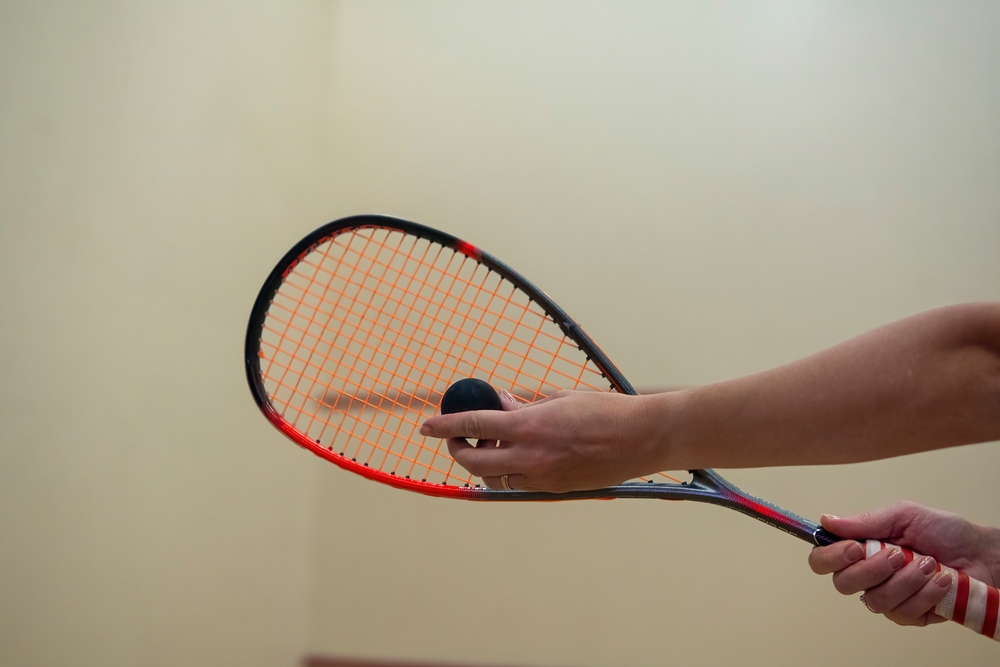
The Smash Serve Variation In Squash
This serve does precisely what the name suggests. Your aim is to smash the ball as hard as you can without exerting yourself too much. Always stay in control. The focus of this serve is to hit the ball with force and hit it low enough for the ball to hit the side wall and bounce multiple times before it can hit the back wall.
The goal of this serve is to catch your opponent completely off guard, which will probably result in your opponent rushing to rally the ball and making a lot of inaccurate foot movements, throwing them off and causing them to hit the return of serve inaccurately.
There is also a downside to this serve variation. It can result in you overshooting the serve, causing the ball to go so hard that it goes to the back wall quickly and comes in towards your opponent, making it easier for them to return the serve without too much exertion. This gives your opponent the advantage and yourself the disadvantage.
Another problem with the smash serve is that you may not have enough time to position yourself at the “T.” This is why it is so essential to practice as much as you can, improving your confidence on the court, getting to know the techniques of your serves and how hard you should hit for the kill, and where you want to be to receive the return of serve.
Where To Aim The Smash Serve
A smash serve is aimed at the front wall, marginally to the left of the center but aimed low, slightly above the center line. If served correctly, it will hit the side wall low, almost level with your opponent and maybe even in front of them. The ball should bounce after hitting the side wall, and the second bounce should be close to the back wall.
The Backhand Serve Variation In Squash
In order for you to get comfortable with a backhand serve and hit the ball with the necessary velocity and accuracy, you need to practice and then practice some more. The backhand serve can be one of the most difficult serve variations to master.
Because of this, the backhand serve is mainly used by pro players, but if you can master this serve, it will give you an advantage as it doesn’t require you to turn to recover the “T” position.
Where To Aim The Backhand Serve
A backhand serve is aimed at the front wall, to the left of the center, targeted halfway between the red line’s middle point and just on top of the line. If served correctly, it will hit off the front wall to the side wall quite far back and roughly at about your opponent’s head height. It should bounce before it hits the back wall.
The Body Serve Variation In Squash
This serve is typically a variation serve because it catches your opponent off-guard. But you should use this one sparingly because once you’ve played it, your opponent will look out for the tell-tale signs to see if you will hit the same serve again.
The technique of this serve is to try and aim the ball directly at your opponent. If it’s done with precision, and if the ball hits your opponent, this means that you win the rally. If this didn’t happen, it would probably result in an off-balance hit because they expected the ball to come from another direction.
Where To Aim The Body Serve
A body serve is aimed at the front wall, marginally to the left of the center, and low, slightly above the center line. If aimed correctly, it will hit low on the sidewall, down and level towards your opponent. It can also fall just short and end up in front of your opponent.
The ball should bounce shortly after it has hit the side wall. There should preferably be a second bounce close to the back wall.
Tips And Tricks For Different Variations Of The Main Serves
All of these serves can be adjusted by hitting the ball with different variations, so change up the tactics of your game. Throw in some extra velocity since the speed of the ball can make a huge difference in a serve. The angle and depth of where you choose to hit the ball on the front wall will also determine where it will be played from as a return of serve.
The best thing to do is practice. As you gain more confidence, you can play around with different velocities, depths, and angles to keep growing your serve game. When you’re in a match, never fall into a pattern. Change things up to keep the game lively and make your moves utterly unpredictable to your opponent.
This is what gives you an advantage and ultimately wins the game, more than anything else.
Conclusion
Squash is a reasonably easy game to learn, but this can not be said for a squash player who wants to be better than an average player. Mastering all the movements, accuracy, and serve variations, and developing the stamina that is required when competing with an opponent, is ultimately the goal. That’s why you chose this highly competitive game: you want to win and be excellent at it.
References
- https://www.youtube.com/watch?v=Y3SKQLKRUXU
- https://www.youtube.com/watch?v=Qt-o7tisARc
- https://www.youtube.com/watch?v=L4nlljx07z4
- https://www.youtube.com/watch?v=02JLBs8BRro
- https://www.youtube.com/watch?v=IkZIYpjyILA
- https://www.youtube.com/watch?v=2bHe0sxW51Q
- https://www.reddit.com/r/squash/comments/2qvvj3/what_are_different_types_of_serve_strategies_in/
- https://www.reddit.com/r/squash/comments/lkoenv/how_do_i_get_better/
- https://www.reddit.com/r/squash/comments/5ohdwe/serve_tips_returning_and_serving/

